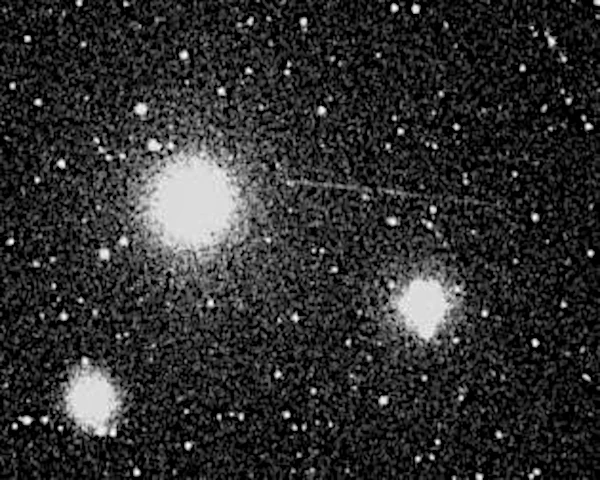
On January 27, 2012, the asteroid 2012 BX34 flew past Earth at a distance of about 59,000 km, or just 0.15 times the Earth-Moon distance. This small object, estimated at only 8 to 11 meters in diameter, belongs to the category of NEO, and more specifically to the Apollo type NEA, whose orbit regularly crosses that of Earth.
Discovered by the Catalina Sky Survey program in Arizona, 2012 BX34 generated significant scientific interest as it passed inside the orbit of many geostationary satellites. Its relative speed during the flyby was about 13.4 km/s, a value consistent with the average speeds of small near-Earth asteroids.
N.B.:
Apollo-type asteroids belong to a class of NEO whose semi-major axis is greater than 1 astronomical unit (AU), but whose perihelion is less than 1.017 AU. In other words, their orbit crosses that of Earth. Discovered by Karl Reinmuth (1892-1979) in 1932, the Apollo family is now the most numerous population of NEA, representing more than 60% of known near-Earth asteroids.
Radar and photometric data collected during its approach allowed for the estimation of a moderate albedo, suggesting a silicate composition typical of S-type asteroids. The heliocentric orbit of 2012 BX34 is characterized by a sidereal period of 1.08 years and an eccentricity of 0.36. Its perihelion distance is 0.68 AU and its aphelion reaches 1.45 AU.
Its close approach to Earth posed no impact risk, with the calculated probability being less than \(10^{-7}\). However, this type of approach helps test the accuracy of gravitational prediction models and the error margins related to orbital perturbations.
Orbital calculations are based on the universal law of gravitation formulated by Isaac Newton (1643-1727), according to which the force between two masses is given by: \( F = G \frac{m_1 m_2}{r^2} \)
In the case of near-Earth asteroids, perturbations caused by Earth and the Moon continuously alter orbital parameters: inclination, eccentricity, and argument of perihelion. These variations are calculated by numerically integrating the equations of motion with a time resolution of less than one hour, to maintain the accuracy of trajectories over several years.
Before 2012, only a few asteroids of comparable size had been observed as close to our planet, notably 2008 TC3 and 2011 CQ1. The latter, about 1 meter in diameter, still holds the record for the closest approach, at just 5,480 km from Earth, but it disintegrated in the atmosphere. In comparison, 2012 BX34 passed much farther away, without experiencing atmospheric braking or mechanical alteration.
These observations are valuable for NEO models as they help improve early detection strategies. NASA estimates that nearly 95% of objects larger than 1 km are now cataloged, but less than 30% of asteroids smaller than 100 meters are regularly tracked.
N.B.:
Radar and optical observations now allow tracking objects larger than 10 meters up to a distance of about 1 million kilometers. Future missions such as NEO Surveyor will enhance this capability in the coming decade.
| Asteroid Name | Passage Date | Minimum Distance (km) | Estimated Diameter (m) | Relative Speed (km/s) |
|---|---|---|---|---|
| 2012 BX34 | January 27, 2012 | 59,000 | 8–11 | 13.4 |
| 2011 CQ1 | February 4, 2011 | 5,480 | 1.2 | 12.7 |
| 2008 TC3 | October 7, 2008 | 0 (impact) | 4.1 | 12.8 |
Source: NASA Center for Near Earth Object Studies (CNEOS) and Jet Propulsion Laboratory (JPL).